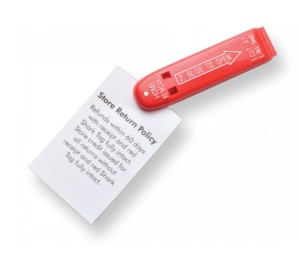 The margins in a retail business can be slim. It doesn’t take much shrinkage for a store to go from the black to the red. One of the primary roles of a successful store manager is to develop, follow and then tweak a comprehensive security plan. The creation of an effective plan takes a large investment of time, money and effort.
The margins in a retail business can be slim. It doesn’t take much shrinkage for a store to go from the black to the red. One of the primary roles of a successful store manager is to develop, follow and then tweak a comprehensive security plan. The creation of an effective plan takes a large investment of time, money and effort.
Managers often have gut feelings about where their losses are, and may even have a good idea about how to control them. However, few of them understand — and therefore can’t effectively address — the full scope of the problems. A successful plan starts with knowing the numbers, not indistinct feelings or incomplete ideas.
The yearly National Retail Security Survey (University of Florida) started in 1991and is considered to be the most accurate and comprehensive in the industry. The 2014 report estimates that the total shrinkage amount for retail businesses is $44.25 billion. This is broken down into 5 categories. The numbers have been rounded and don’t add to 100%.
Employee Theft (41%) – Many managers believe shoplifting is their number 1 shrinkage problem and make the mistake of overlooking this statistic, to their detriment. Employees will steal time, money and merchandise. This is regardless of how nice or punitive their supervisor is, good guys get stolen from as much as bad ones do.
Shoplifting (33%) – People steal for a variety of reasons. With the advent of the Internet (which makes it easier to sell stolen items) and the difficult financial times of the last several years it has been steadily on the increase. But, it remains consistently second to employee theft, which has also been rising.
Administrative (15%) – This category represents common human error involving administrative tasks, not deliberate fraud. It includes things such as: miscounting or misplacing stock, money/cash register mistakes, lack of follow through on paperwork and poor record/receipt keeping.
Unknown (7%) – Some researchers view this category as a miscellaneous or catch-all one, where odd or seldom seen circumstances, which don’t fit any other classification, are located.
Vendor Fraud (6%) – This is another area of shrinkage that many managers overlook. They trust their supplier or its representative and ignore all the places (i.e. warehouse, delivery driver, invoices, order forms) where their shipment is shorted “just a few things”.
Before developing a loss prevention security plan it’s vital to understand where the loss is happening. Then valuable resources, time and money, won’t be wasted on ineffectual systems, training and equipment. Good managers know their employees, customers and suppliers, and have a feeling about where the problems are. Great managers know all that too, but they back up their subjective feelings with objective numbers.
Nicole Abbott is a writer and psycho-therapist with over 20 years of experience in the fields of mental health and addiction. She’s an educator, consultant, lecturer, trainer and facilitator, who’s conducted over 200 workshops, trainings, presentations, college classes and seminars.










